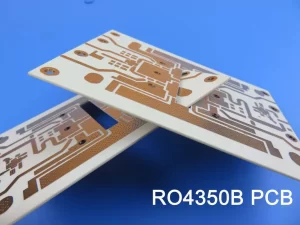North American PCB industry witnessed an 11.6% decline in sales in February.
Printed Circuit Boards (PCBs) are vital components of electronic products, often referred to as the “motherboards” of electronics, extensively used in various sectors including consumer electronics, automotive, and communication devices. Recently, a China Securities Journal reporter visited a PCB factory in Shenzhen to investigate the market conditions.
According to a representative from the PCB industry, the overall demand in the consumer electronics sector has been optimistic compared to last year. The rapid development of foldable smartphones has brought positive impacts to the PCB industry, increasing the demand for flexible circuit boards. Additionally, seizing the opportunities in the growing market of new energy vehicles, the company has seen a rise in orders from leading global clients in this sector.
Enhanced PCB Demand The company, a leading global PCB manufacturer with over 30 years of experience, specializes in PCB, MPCB (Metal Core PCB), and FPC (Flexible PCB) product lines, serving renowned domestic and international enterprises across consumer electronics, automotive electronics, communications, industrial control, and smart terminal hardware sectors.
An executive from a consumer electronics company stated that with the arrival of replacement cycles and the integration of AI in smartphones and laptops, it is expected that the product shipments in the consumer electronics market will increase in 2024.
Institutional analysis suggests that the recovery of the consumer electronics industry will benefit companies related to the PCB industry. A research report from an open-source securities firm stated that the global shipments of smartphones, PCs, and tablets in the fourth quarter of 2023 witnessed a narrowing decline and even achieved year-on-year growth. It is anticipated that with the gradual recovery of the global economy, the shipment volume of consumer electronics products will continue to rebound, benefiting PCB companies.
The rapid growth of the foldable smartphone market has increased the demand for flexible circuit boards. A representative from the PCB industry mentioned, “Foldable smartphones are selling well, with a high growth rate in shipments. The demand for the company’s FPC flexible circuit boards and rigid-flex boards has significantly increased. The connection between dual screens relies on flexible FPCs, and with the increase in the number of cameras, not only does it increase the usage of FPCs, but it also poses higher requirements for the number of flexing cycles.”
According to industry data, in 2023, the shipment volume of foldable smartphones in China reached approximately 7.07 million units, with a year-on-year growth rate of 114.5%; globally, the sales volume of foldable smartphones reached approximately 18 million units, with a year-on-year growth rate of 27%. Research firm Counterpoint predicts that the global shipment volume of foldable smartphones will reach 55 million units by 2025.
A research report from an open-source securities firm stated that in recent years, due to the increasing complexity of consumer electronics functions, the number of electronic components required is increasing. At the same time, the capacity of batteries is continuously increasing, which poses higher requirements for the volume, weight, and number of electronic components accommodated by PCBs, leading to the continuous application of high-specification products such as FPC and HDI in consumer electronics products.
China Merchants Securities believes that after experiencing a long period of declining sales of smartphones and PCs, the destocking phase of the industry chain is coming to an end. In the future, stimulated by both the “passive replacement” demand and the “active replacement” demand driven by new products such as AI PCs, the consumer electronics industry’s prosperity is expected to continue to recover.
The representative mentioned that the company has been supplying customers in various fields such as smart homes, TWS headphones, and headsets, and the demand in the consumer electronics industry has been much more optimistic this year compared to last year.
Expanding Automotive Electronics Business In a stable consumer electronics demand scenario, the company is accelerating the expansion of its customer base in the automotive industry.
In recent years, the rapid development of the new energy vehicle market has led the company to closely follow the product and market trends, continuously conducting research and development of related printed circuit board products, and witnessing rapid growth in FPC business for new energy vehicle batteries. The general manager of the company’s Shenzhen PCB factory mentioned that with the development of the new energy vehicle market, the company has seen an increase in orders from the new energy vehicle sector.
A listed PCB company stated that in the field of automotive electronics, there has been an increase in demand for high-level and high-reliability PCBs, mainly reflected in the ability to provide integrated PCB structures for multifunctional operations and PCBs with better heat resistance. According to the general manager, driven by the strong momentum of electrification and intelligence in the automotive industry, the automotive PCB market is witnessing a trend of increasing volume and price. Domestic and foreign Tier 1 customers (first-tier suppliers to automobile manufacturers) are the main customers of the company, and the company’s products such as new energy vehicle charging and distribution boards and millimeter-wave fifth-generation radar/4D imaging radar boards have entered mass production.
A research report from Dongguan Securities stated that the increased penetration of smart cabins and autonomous driving will significantly increase the usage of PCBs on one hand and drive demand for high-value products such as HDI on the other hand. Research firm Prismark predicts that by 2026







